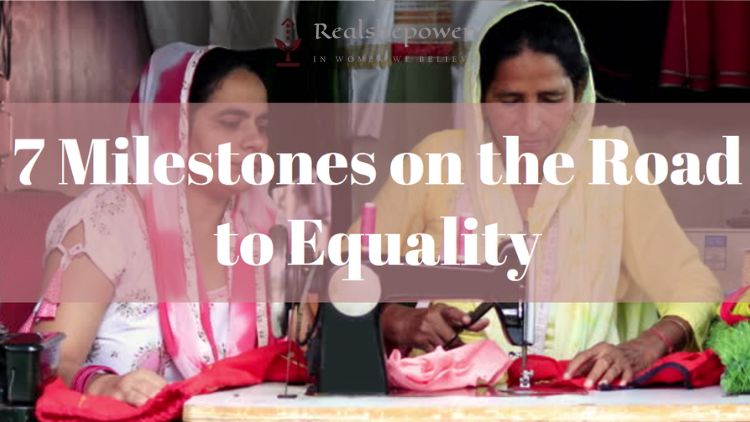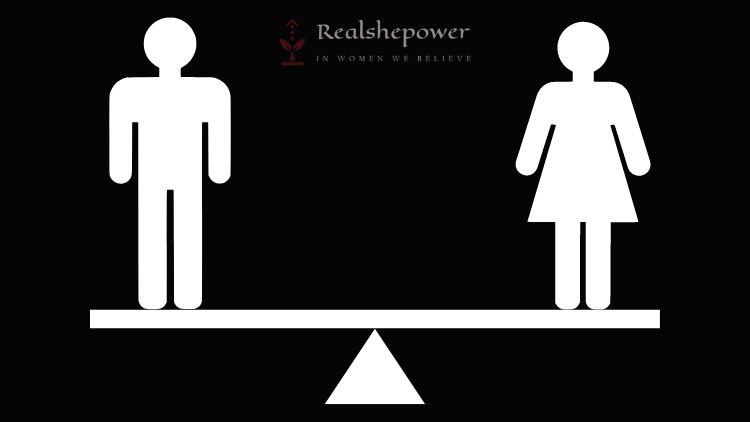7 Empowered Steps: A Journey of Women’s Rights Transforming India


India, a land of vibrant culture and rich history, has also witnessed a long and ongoing struggle for women’s rights. Generations of women have fought tirelessly to break down barriers and achieve equality. This article delves into seven key milestones on this journey, exploring how they have impacted Indian society as a whole.
Table of Contents
7 Milestones on the March for Equality: A Look at Women’s Rights in India

1. Education: Empowering Minds, Changing Lives (1849 – Present)
In the 19th century, female literacy rates in India were abysmally low. Savitribai Phule, a pioneering social reformer, defied societal norms by opening a school for girls in 1849. This marked a turning point. Over the years, numerous social movements and legislative efforts like the Right to Education Act (2009) have championed girls’ education. The results are undeniable: the female literacy rate in India, though still lagging behind males (77.7% vs. 91.2% in 2021), has witnessed a significant rise. Education empowers women, equipping them with the tools to make informed choices, participate in the workforce, and advocate for themselves and their families.
2. The Fight for Suffrage: A Voice in the Nation’s Future (1932)
Prior to 1932, Indian women were denied the right to vote. Influential figures like Sarojini Naidu played a crucial role in the suffrage movement. Finally, in 1932, the Government of India Act granted voting rights to women with certain property qualifications. This milestone marked a significant shift in the political landscape, allowing women to have a say in shaping the nation’s future. Today, women hold prominent positions in Indian politics, from occupying ministerial roles to serving as the President of India.
3. Breaking Barriers in the Workplace: From Home to Boardrooms (1950s – Present)
Traditionally, women’s roles were largely confined to the domestic sphere. However, the post-independence era saw a gradual increase in women’s participation in the workforce, particularly in sectors like education, healthcare, and public administration. This trend has continued with growing numbers of women entering diverse fields, including technology, finance, and entrepreneurship. Legislative measures like the Maternity Benefit Amendment Act (2017) have further supported women’s career aspirations. While gender disparity in the workforce persists, the increasing visibility of successful women professionals serves as a powerful inspiration for the younger generation.
4. Legal Reforms and Property Rights: Securing a Fair Share (1956 – Present)
The Hindu Succession Act of 1956 granted women equal inheritance rights to ancestral property. This landmark legislation challenged the traditional system that favored male heirs. Subsequently, other legal reforms like the Protection of Women from Domestic Violence Act (2005) and the Sexual Harassment of Women at Workplace (Prevention, Prohibition and Redressal) Act (2013) have provided crucial legal frameworks to protect women’s rights and safety.
5. Dowry Prohibition Act: Addressing a Harmful Tradition (1961)
The Dowry Prohibition Act of 1961 outlawed the practice of dowry, a social evil where the bride’s family is expected to provide gifts and money to the groom’s family. While the act has had a positive impact, dowry deaths and harassment related to dowry demands continue to be a concern. Further strengthening of law enforcement and a societal shift in attitudes are crucial to completely eradicating this harmful practice.
6. Addressing Gender-Based Violence: Breaking the Silence (1990s – Present)
Violence against women, both physical and sexual, remains a significant issue in India. The brutal gangrape and murder of Nirbhaya in Delhi in 2012 sparked nationwide outrage and led to stricter anti-rape laws like the Criminal Law Amendment Act (2013). This case also brought the issue of gender-based violence to the forefront of public discourse. Initiatives promoting women’s safety and self-defense training programs are crucial steps towards creating a safer environment for women.
7. Changing Mindsets: A More Equitable Future (Ongoing)
Public awareness campaigns and media portrayals that challenge gender stereotypes play a vital role in promoting gender equality. Social media platforms provide avenues for women’s voices to be heard, fostering a more inclusive and progressive discourse. However, significant challenges remain, including the prevalence of child marriage, female infanticide, and unequal pay for equal work. Addressing these issues requires a multi-pronged approach involving legal reforms, social activism, and community education.
The Road Ahead: Long Strides, Yet Miles to Go
The journey towards women’s rights in India has been marked by remarkable progress, but the path forward is not without its challenges. Here are some key areas demanding continued focus:
- Bridging the Gender Pay Gap: Despite strides in women’s workforce participation, a significant gender pay gap persists. Addressing this disparity requires enforcing equal pay for equal work legislation and promoting women’s leadership positions.
- Combating Gender Stereotypes: Entrenched societal norms often restrict women to certain roles. Educational programs and media campaigns that challenge these stereotypes are crucial to promoting gender equality in all spheres of life.
- Ensuring Safety in Public Spaces: Women’s safety remains a critical concern. Efficient law enforcement, improved street lighting, and bystander intervention training can make a significant difference.
- Addressing Rural-Urban Disparity: Women in rural areas often face greater challenges in terms of education, healthcare, and economic opportunities. Bridging this gap requires targeted policies and development initiatives.
The Impact on Society: A Ripple Effect
The fight for women’s rights in India has had a profound impact on the nation’s social fabric. Here are some key points to consider:
- Economic Growth: Studies show that increased female labor force participation contributes significantly to economic growth and development.
- Empowered Families: When women are educated and empowered, their families and communities benefit as well.
- Democratization: Women’s political participation strengthens democracy by ensuring diverse voices are heard in decision-making processes.
- Social Progress: Achieving gender equality is essential for creating a more just and equitable society.
Conclusion: A Journey of Continuous Progress
The fight for women’s rights in India is a work in progress. While significant milestones have been achieved, challenges remain. By working together, policymakers, activists, educators, and citizens can contribute to building a more equitable future where women have equal opportunities to thrive and contribute to society.
Continuous advocacy, legal reforms, and a shift in societal mindsets are all essential ingredients for ensuring that the journey towards women’s rights in India reaches its ultimate destination – a nation where women and men stand shoulder-to-shoulder, empowered and equal.
You can now write for RSP Magazine and be a part of the community. Share your stories and opinions with us here.
